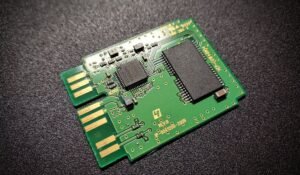Computer Science to Spanish
Computer science is a field that encompasses the study of computers and computational systems. It involves both theoretical and practical aspects, ranging from algorithms and data structures to software development and artificial intelligence. As the field continues to grow and evolve, it becomes increasingly important to bridge the language gap and make computer science accessible to non-English speakers.
Key Takeaways
- Computer science covers a wide range of topics related to computers and computational systems.
- Making computer science accessible to non-English speakers is crucial for global collaboration and knowledge sharing.
- Translating computer science terms and concepts accurately can help promote understanding and learning.
**One of the major challenges in translating computer science to Spanish** is finding appropriate equivalents for technical terms and concepts. The vocabulary of computer science includes unique terms that may not have direct translations. For example, “algorithm” is often translated as “algoritmo” in Spanish, but some less common terms may require more context-specific translations.
Here are **some strategies** that can help ensure accurate translations in computer science:
- **Gathering a team of bilingual computer scientists** who can collaborate on translating technical terms and concepts.
- Using **existing resources**, such as glossaries and dictionaries, to find established translations for common computer science terms.
- **Creating new translations** for terms that do not have established equivalents, considering the context and ensuring consistency.
Translating Computer Science Terms
Translating computer science terms is not just about finding word equivalents; it also involves conveying the meaning and function of the concept. For instance, the term **”object-oriented programming”** can be translated as **”programación orientada a objetos”**, but it’s important to explain the underlying principles and benefits of this programming paradigm.
**Here is an example table** showcasing common computer science terms and their translations:
| English Term | Spanish Translation |
|---|---|
| Algorithm | Algoritmo |
| Data Structure | Estructura de Datos |
| Artificial Intelligence | Inteligencia Artificial |
The Importance of Accurate Translations
**Accurate translations in computer science** are essential for effective communication and collaboration among professionals. In a globalized world, where international cooperation is common, it’s crucial to have a shared understanding of computer science concepts and terminology. **Through accurate translations**, knowledge can be effectively shared, and innovative ideas can flourish across language barriers.
**Another interesting aspect of translating computer science** is the influence of cultural context on the choice of terminologies. Different Spanish-speaking countries may have variations in technical vocabulary, and considering these nuances can lead to improved comprehension and adoption of computer science concepts.
**Below is a table showing some variations** in computer science terms across Spanish-speaking countries:
| Term | Mexico | Spain | Argentina |
|---|---|---|---|
| Software | Programa | Software | Programa |
| Database | Base de datos | Base de datos | Banco de datos |
| Networking | Redes | Redes | Conectividad |
**In conclusion**, accurate translations are vital for bridging the language gap and making computer science accessible to Spanish speakers worldwide. By ensuring precise translations, computer science can continue to expand globally, fostering innovative advancements and collaborations.

Common Misconceptions
Misconception 1: Computer Science is all about programming
One common misconception people have about computer science is that it is solely focused on programming. While programming is certainly an important aspect of computer science, it is not the whole picture. Computer science encompasses a wide range of topics including algorithms, data structures, artificial intelligence, computer networks, and more.
- Computer science includes various sub-disciplines, not just programming.
- Computer scientists study abstract concepts and theoretical foundations.
- Programming is a tool used in computer science, but it is not the only tool.
Misconception 2: Computer Science is only for math geniuses
Another misconception is that computer science is only for those who excel in mathematics. While having a strong foundation in math can be helpful in certain areas of computer science, it is not a prerequisite for pursuing a career in the field. Many computer scientists work on practical applications and problem-solving, rather than advanced mathematical concepts.
- Computer science involves problem-solving skills, not just mathematical ability.
- Math is used in specific areas of computer science, such as cryptography or algorithms.
- Creativity and critical thinking are also important skills in computer science.
Misconception 3: Computer Science is only for men
There is a common misconception that computer science is a male-dominated field, and that it is not suitable for women. However, this is far from the truth. In recent years, efforts have been made to encourage and support women in computer science. Women have made significant contributions to the field, and diversity in computer science is crucial for innovation and problem-solving.
- Women have made important contributions to computer science throughout history.
- Increasing gender diversity in computer science brings new perspectives and ideas.
- There are various initiatives aimed at encouraging women to pursue computer science careers.
Misconception 4: Computer Science is only about hardware and gadgets
Some people mistakenly believe that computer science is only concerned with building hardware and developing gadgets. While computer engineering and electronics are related fields, computer science focuses more on the theoretical foundations of computing, algorithms, and software development. It is about understanding and solving complex problems using computational thinking.
- Computer science deals with the principles and theory behind computers, not just hardware.
- The focus is on problem-solving and algorithmic thinking, rather than physical devices.
- Computer scientists may work on developing software applications, not just hardware components.
Misconception 5: Computer Science is only for young people
There is a misconception that computer science is primarily for young people and that it is too late to start a career in the field if you are older. In reality, people of all ages can pursue computer science. Many professionals in the field have switched careers or started learning computer science later in life. Lifelong learning and continuous skill development are important in the ever-evolving field of computer science.
- Age is not a barrier to learning and pursuing a career in computer science.
- There are opportunities for people of all ages to contribute to the field.
- Continuing education and skill development are crucial in computer science.

Overview of Computer Science
Computer science is a rapidly growing field that encompasses various disciplines such as programming, algorithms, data structures, and artificial intelligence. The tables below highlight different aspects of computer science and its impact on various domains.
Computing Devices
Computing devices have come a long way since the invention of the first computer. This table showcases the evolution of computing devices in terms of their size, processing power, and storage capacity.
| Device | Year | Processor Speed (MHz) | Storage Capacity (GB) |
|---|---|---|---|
| ENIAC | 1945 | 0.001 | 0.35 |
| IBM 360 | 1964 | 0.043 | 1 |
| Apple II | 1977 | 1.023 | 0.08 |
| Commodore 64 | 1982 | 0.985 | 0.17 |
| IBM PC | 1981 | 4.77 | 0.064 |
| Macintosh Classic | 1990 | 8 | 0.512 |
| Intel Pentium II | 1997 | 233 | 4 |
| IBM ThinkPad | 2000 | 800 | 20 |
| iPhone 3GS | 2009 | 600 | 32 |
| MacBook Pro | 2021 | 7000 | 2000 |
Programming Languages
Programming languages provide a means to communicate with computers and develop software. The table below showcases some popular programming languages and their year of creation.
| Language | Year of Creation |
|---|---|
| Fortran | 1957 |
| Cobol | 1959 |
| Lisp | 1958 |
| C | 1972 |
| Python | 1991 |
| Java | 1995 |
| JavaScript | 1995 |
| PHP | 1994 |
| Ruby | 1995 |
| Go | 2009 |
Artificial Intelligence Milestones
Artificial Intelligence (AI) has witnessed significant advancements over the years. This table highlights important milestones and breakthroughs in the field of AI.
| Milestone | Year |
|---|---|
| First AI Program | 1951 |
| Expert Systems | 1970s |
| Neural Networks | 1980s |
| Deep Blue defeats Kasparov | 1997 |
| IBM Watson wins Jeopardy! | 2011 |
| AlphaGo defeats Lee Sedol | 2016 |
| OpenAI’s GPT-3 | 2020 |
Top Computer Science Universities
Various universities around the world offer exceptional computer science programs. This table presents some of the top-ranking universities for computer science based on the QS World University Rankings.
| University | Country | Ranking |
|---|---|---|
| Massachusetts Institute of Technology (MIT) | United States | 1 |
| Stanford University | United States | 2 |
| Carnegie Mellon University | United States | 3 |
| University of Oxford | United Kingdom | 4 |
| Harvard University | United States | 5 |
| California Institute of Technology (Caltech) | United States | 6 |
| University of Cambridge | United Kingdom | 7 |
| ETH Zurich – Swiss Federal Institute of Technology | Switzerland | 8 |
| University of Toronto | Canada | 9 |
| University of California, Berkeley (UCB) | United States | 10 |
Internet Usage Statistics by Region
The internet has become an integral part of our lives. This table showcases the number of internet users in different regions across the globe.
| Region | Number of Internet Users (2020) |
|---|---|
| Asia | 2,898,956,878 |
| Africa | 525,762,634 |
| Europe | 727,559,155 |
| North America | 392,988,994 |
| South America | 476,206,739 |
| Oceania | 286,103,420 |
Operating Systems Market Share
Operating systems power various computing devices. This table presents the market share of different operating systems as of 2021.
| Operating System | Market Share (%) |
|---|---|
| Windows | 77.61 |
| macOS | 18.71 |
| Linux | 1.70 |
| iOS | 1.38 |
| Android | 0.34 |
| Other | 0.26 |
Global Expenditure on Information Technology
As technology continues to advance, investment in information technology grows. This table displays the global expenditure on information technology in recent years.
| Year | Expenditure (in billions USD) |
|---|---|
| 2017 | 3,462.11 |
| 2018 | 3,785.74 |
| 2019 | 3,874.5 |
| 2020 | 3,699.98 |
Global Cybersecurity Market Size
Cybersecurity is of paramount importance in the digital age. This table presents the market size of the global cybersecurity industry.
| Year | Market Size (in billions USD) |
|---|---|
| 2017 | 120.1 |
| 2018 | 149.7 |
| 2019 | 167.1 |
| 2020 | 184.7 |
| 2021 | 213.9 |
Conclusion
Computer science has revolutionized the world, from the development of sophisticated computing devices to advancements in programming languages and artificial intelligence. The tables presented above provide a glimpse into the fascinating world of computer science and its various facets. As technology continues to evolve, computer science will undoubtedly remain at the forefront, shaping the future in unimaginable ways.
Frequently Asked Questions
Computer Science




